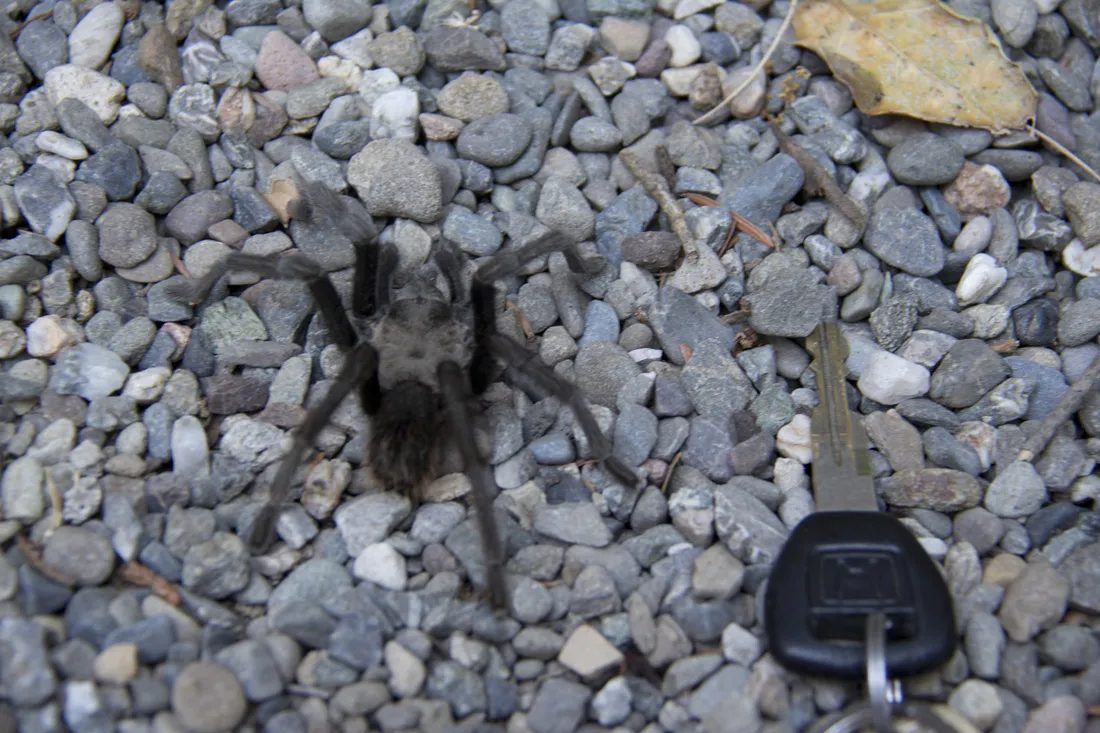What is a California Black Tarantula?
The California Black Tarantula (Aphonopelma eutylenum) is a large, hairy spider native to the southwestern United States, particularly California. These impressive arachnids are a fascinating part of the local ecosystem. Known for their dark coloration, these spiders are a common sight in the appropriate habitats, though they are often more active at night, making them less frequently seen by the average person. Despite their intimidating appearance, California Black Tarantulas are generally not aggressive and rarely bite unless provoked. They play a vital role in controlling insect populations and are a testament to the biodiversity of California’s varied landscapes. Understanding the California Black Tarantula gives valuable insights into the delicate balance of the natural world.
Appearance and Identification
Identifying a California Black Tarantula is relatively straightforward due to its distinctive appearance. Adults are typically solid black or dark brown, though the shade can vary slightly. The females tend to be larger than the males, with a body length that can reach up to 2.5 inches, while the males are a bit smaller. Both genders have a thick, hairy body and legs, which gives them a somewhat intimidating look. The cephalothorax (the fused head and thorax) and abdomen are clearly defined, with eight legs attached to the cephalothorax. You can distinguish them from other tarantula species by observing their overall size, color, and habitat. It is important to note the presence of urticating hairs on their abdomen, which they can flick off as a defense mechanism, causing irritation to potential threats.
Size and Distinctive Features
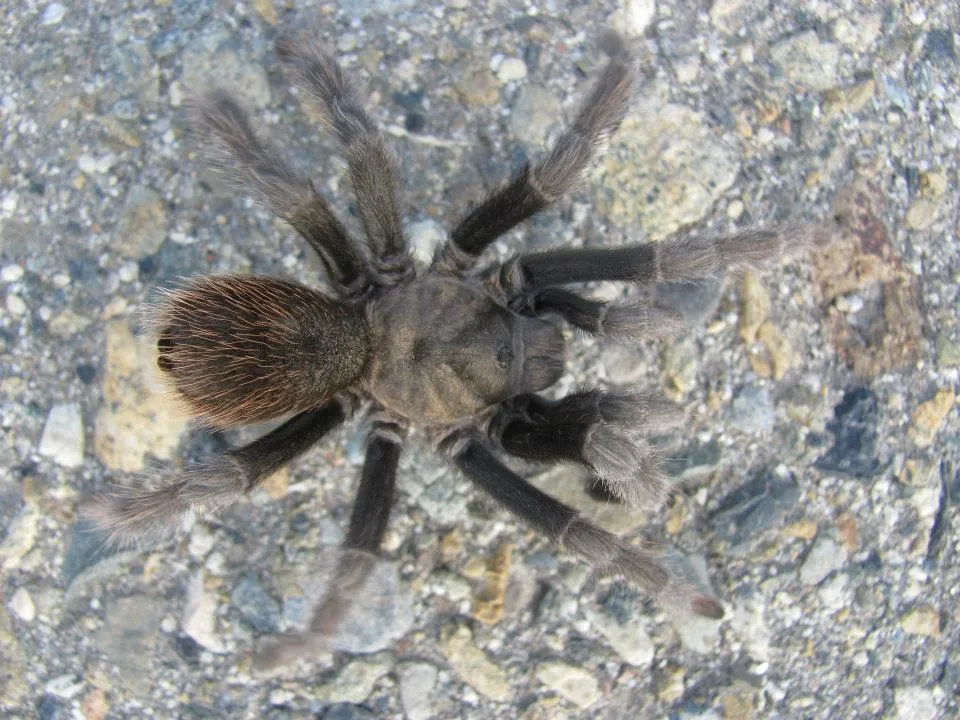
California Black Tarantulas are among the largest spiders found in California, with females often reaching a leg span of up to 5 inches. Their sheer size is one of their most striking features. Males are generally smaller, but still sizable, especially considering the other spider species in the area. Besides their size, they are characterized by their dark coloration, as mentioned before, which provides effective camouflage in their natural surroundings. These spiders also have two body sections—the cephalothorax and the abdomen—and possess eight long, hairy legs. They have large fangs and pedipalps near their mouth, which are used for feeding and sensory purposes. The presence of urticating hairs is another key feature, used as a defensive tool against predators and other perceived threats.
Habitat and Distribution
California Black Tarantulas are primarily found in the southwestern United States, with a strong presence in California. Their preferred habitats are typically open, dry areas such as grasslands, chaparral, and oak woodlands. They are well-adapted to these environments and can often be found in burrows that they dig themselves. The distribution of these tarantulas is largely dictated by the availability of suitable habitats and prey. They are not usually found in dense forests or areas with high humidity. These spiders can be found in various regions of California, but they are particularly common in the foothills and valleys of the state, providing a critical element of the local ecosystems. The specific environmental conditions that allow them to thrive include moderate temperatures and adequate access to prey and shelter.
Where Can They Be Found
You can find California Black Tarantulas in various regions of California. They are particularly prevalent in the foothills, valleys, and grasslands. Some specific locations to spot them include the chaparral environments, oak woodlands, and other dry, open habitats. Their distribution is widespread throughout much of the state, but they are not usually present in the densely forested or highly urbanized areas. During mating season, males are often seen actively searching for females, making them more visible. The best time to observe them is usually during the evenings or early mornings, as they tend to be nocturnal. When searching for California Black Tarantulas, it’s useful to keep an eye out for their burrows, which are usually found in the ground or under rocks.
Behavior and Lifestyle
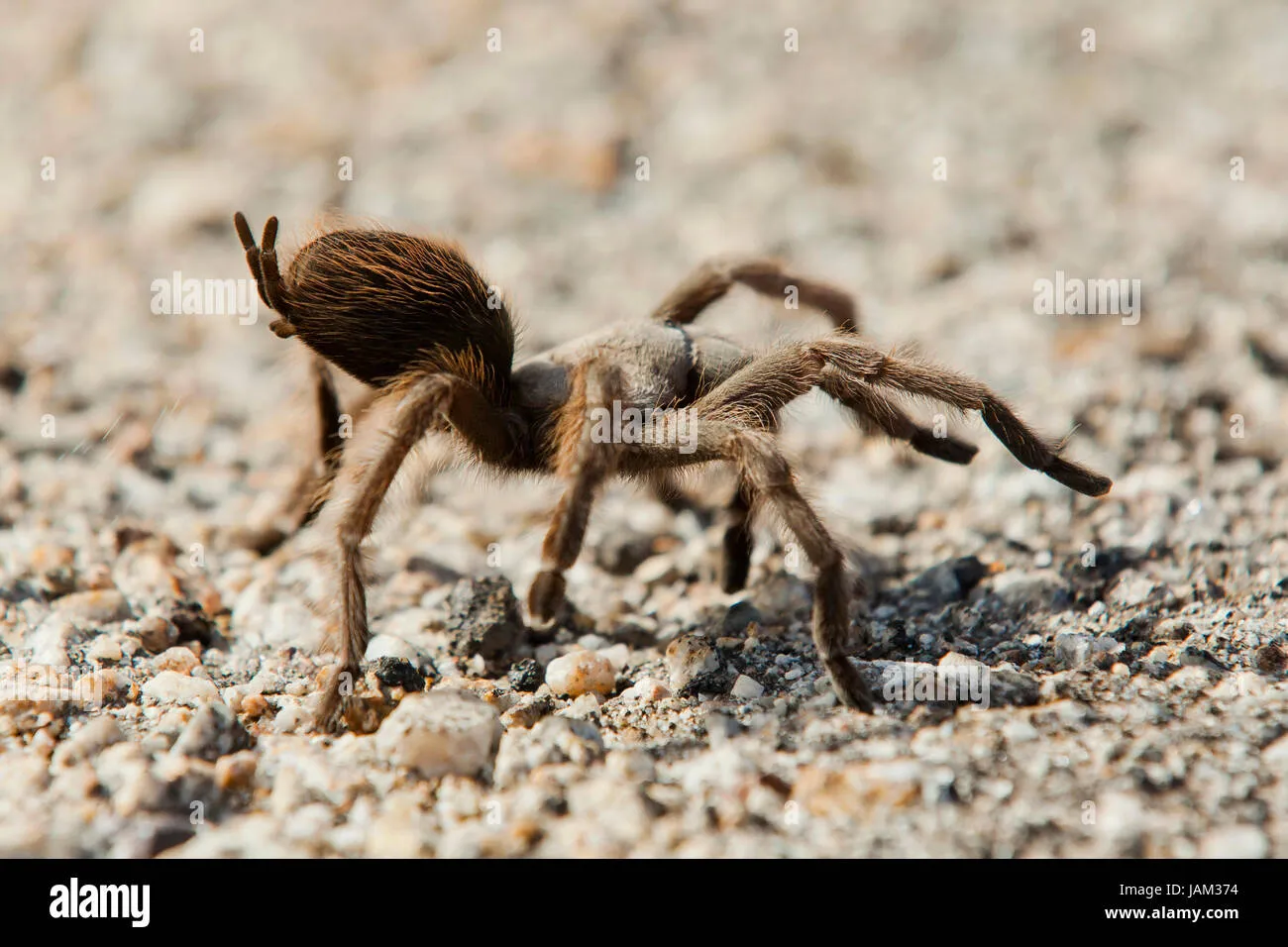
California Black Tarantulas have a fascinating lifestyle, characterized by their nocturnal habits and solitary nature. They typically spend their days inside burrows, which they dig themselves or take over from other animals. These burrows provide shelter from the sun and predators. They are most active during the night, when they emerge to hunt for prey. While they are not aggressive, they will defend themselves if they feel threatened. The males and females exhibit distinct behaviors. Males leave their burrows during the mating season to search for mates, while females typically stay in their burrows, waiting for a suitable male to come along. This distinct division of behaviors adds to their unique life cycle.
Burrowing and Hunting Habits
California Black Tarantulas are skilled burrowers. They excavate burrows in the soil, which they use as a shelter and a safe place to ambush their prey. Their burrows can be quite deep, providing them with protection from both predators and the harsh outdoor elements. These spiders are primarily ambush predators, meaning they wait patiently near their burrows until prey comes close. They are opportunistic hunters, feeding on insects, small lizards, and even small mammals. The tarantulas use their strong fangs to inject venom into their prey, immobilizing it before consuming it. This hunting strategy, combined with their camouflage, makes them highly successful predators in their habitats.
Diet and Feeding
The California Black Tarantula’s diet primarily consists of insects and other invertebrates. These tarantulas are opportunistic feeders, meaning they will eat whatever prey they can capture. Their diet can include crickets, beetles, grasshoppers, and even small vertebrates. They use their venom to immobilize their prey before consuming it. The venom is not typically dangerous to humans. Young tarantulas start by feeding on smaller insects, growing into larger prey items as they mature. They have strong fangs, that they use to inject venom to immobilize prey. This feeding habit is crucial to their growth and survival in their environment.
Lifespan and Reproduction
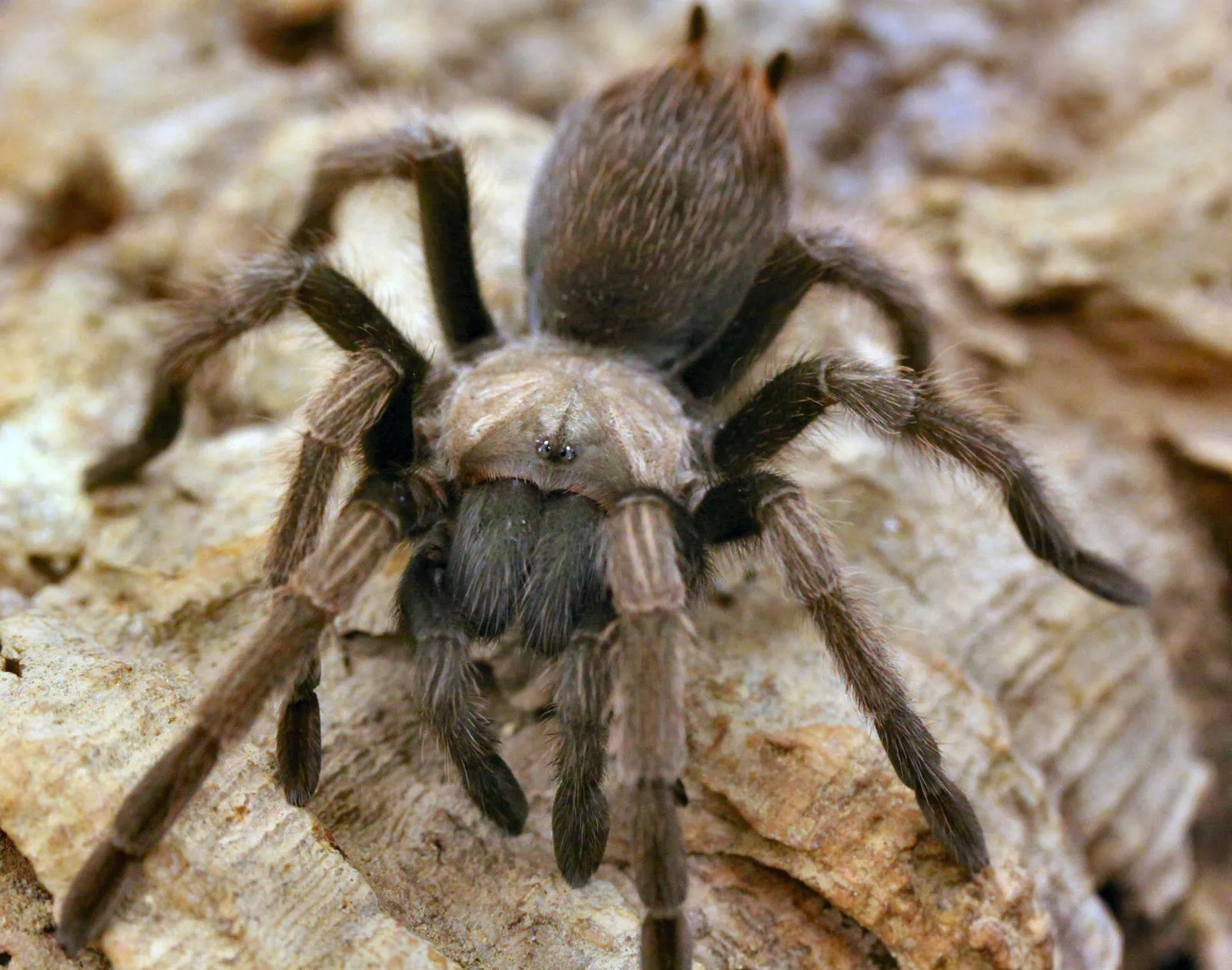
California Black Tarantulas have a significant lifespan, especially for females. Females can live for up to 25 years or more in the wild, while males typically have a shorter lifespan, around 7-10 years. The difference is largely because males die shortly after mating. Their reproduction process involves a mating ritual, with the males seeking out the females. After mating, the female lays eggs in a silken egg sac. The female then guards this sac, and once the spiderlings hatch, they remain under her protection for a while. These spiders have a relatively slow growth rate, taking several years to reach full maturity.
Mating Rituals and Egg Sacs
The mating ritual of the California Black Tarantula is a fascinating process. The male must approach the female with caution, as the female may see him as prey. He will often tap or drum on her burrow to signal his presence. If the female is receptive, she will allow him to mate. After mating, the male typically leaves quickly to avoid being eaten by the female. The female will then create an egg sac, which can contain hundreds of eggs. She diligently guards the egg sac, ensuring the eggs are safe until they hatch. The spiderlings emerge, and while they may stay near the mother for a while, they eventually disperse to find their own territories and begin the cycle again. This intricate process ensures the survival and continuation of the species.
Are California Black Tarantulas Dangerous?
Despite their size and imposing appearance, California Black Tarantulas are generally not considered dangerous to humans. They are not aggressive spiders and typically prefer to avoid confrontation. Bites are rare and usually occur only when the spider feels threatened or is provoked. They are not typically considered aggressive spiders and usually avoid confrontations. The venom of these spiders is not potent to humans, and a bite typically causes only mild symptoms similar to a bee sting. Although they have the potential to bite, they are not considered highly dangerous compared to other venomous creatures. The risk of severe complications from a bite is very low, making them generally safe to coexist with.
Venom and Bite
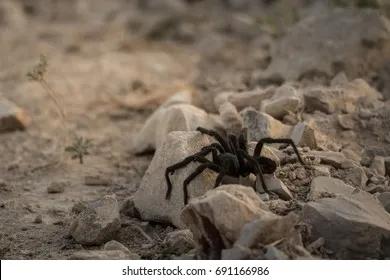
The venom of the California Black Tarantula is not particularly potent to humans. A bite from this spider is likely to cause only minor localized pain, redness, and swelling, similar to a bee sting. The venom is designed to subdue their prey. The fangs of a tarantula are strong, but their main function is not to inject a large amount of venom, but to capture and hold prey. The effects of a bite are typically short-lived, and severe reactions are extremely rare. It’s essential to treat the bite with basic first aid, such as cleaning the area and applying a cold compress, but typically, medical intervention is not required.
Precautions and Safety Measures
While California Black Tarantulas are not highly dangerous, it’s wise to exercise some precautions when encountering them in the wild. Avoid handling them, as this is the most common way to get bitten. If you find one in your home, it’s best to gently usher it outside with a container and a piece of cardboard. Wear gloves if you need to handle items where a tarantula might be present. Avoid provoking or startling them, and respect their space. If you do get bitten, remain calm, clean the bite area with soap and water, and apply a cold compress to reduce any swelling or discomfort. Seek medical attention if symptoms worsen or if you experience an allergic reaction, though this is unusual.
Conservation Status and Threats
The California Black Tarantula is not currently listed as endangered or threatened, but like all wildlife, it faces some threats. Habitat loss due to human development and agricultural practices is a significant concern. Pesticide use can also impact their population. The collection of tarantulas for the pet trade, while not a major threat, can still affect local populations if not carefully managed. Overall, the primary threat to these spiders is habitat destruction. It is important to preserve their natural habitats to ensure their survival. Conservation efforts, such as protecting natural spaces, are key to supporting these creatures and the ecosystems they inhabit.
Predators and Ecosystem Role
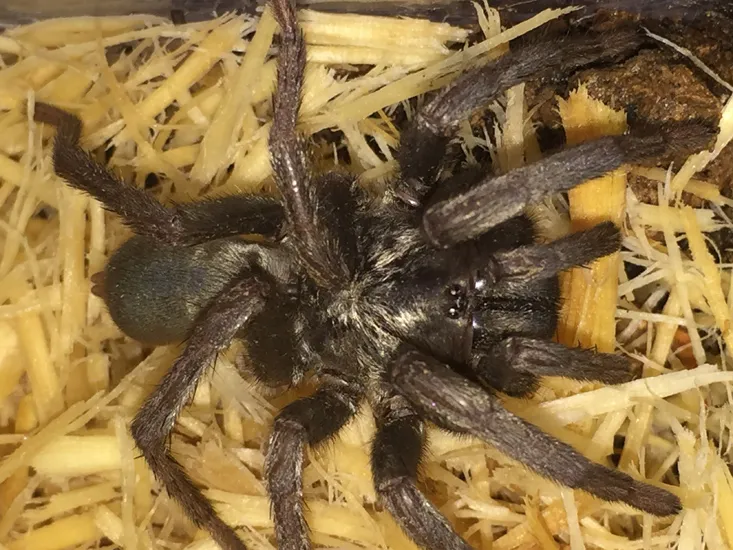
The California Black Tarantula plays an essential role in its ecosystem. As predators, they help control the populations of insects and other small animals. Several animals prey on tarantulas, including birds of prey, coyotes, and other larger predators. Their presence contributes to the biodiversity of their habitats. By keeping insect populations in check, they help maintain the ecological balance. They also serve as a food source for other animals. Understanding their role highlights the interconnectedness of life in the ecosystem. Conservation efforts benefit the entire ecosystem by protecting the California Black Tarantula and ensuring the sustainability of its habitat and prey.
In conclusion, the California Black Tarantula is a remarkable creature that is an essential part of California’s diverse ecosystem. From their striking appearance and unique behaviors to their role in controlling insect populations, these spiders are fascinating subjects of study and appreciation. Although not particularly dangerous to humans, it is important to respect their space and understand their environment. By protecting their habitats, we help ensure the survival of the California Black Tarantula and contribute to the health and biodiversity of California’s natural world.
